Today, I’m heading to Italy for the first time in 7 years (!), and to Puglia for the first time ever. So, to mark the occasion, I thought I’d share a recipe for one of Puglia’s most dramatic pasta dishes: spaghetti all’assassina, the spicy, seared “assassin’s spaghetti” that’s taken over the internet. Spaghetti all’assassina has been popular in Bari, Puglia’s capital and the dish’s birthplace, for decades, but it’s more recently received international acclaim thanks to Stanley Tucci’s Searching for Italy and a few viral videos. I’m not mad about it, either: I love spicy food, I love Apulian cuisine, and I love the idea that sometimes it’s not only okay, but encouraged, to burn things.
Spaghetti all’assassina reeled me in by its name alone, but it certainly looks cool, too, with charred strands of pasta tangled among a tapestry of tomato sauce. Yes, the hefty pinch of chili and black-and-red color scheme make this one killer dish, but I have to agree with Daniel Gritzer’s assessment that it’s the technique, not the taste, that makes it especially murderous. Because spaghetti all’assassina is one of the few Italian pasta dishes made in one pan (and over high heat, no less) and it’s, well, pretty messy—like, what-the-heck-happened-here, is-that-blood-spatter-on-the-walls kind of messy. As I said: dramatic.
Although Americans love a one-pot pasta, the idea of cooking pasta directly in its sauce is rare in Italy, and for good reason. Pasta needs room to roam so it cooks evenly, it abides by somewhat precise cooking times to ensure it’s al dente, and it craves plenty of salt to make it taste good. Without a big pot of well-salted water, these tenets are difficult to uphold, leading to often-gummy pasta that’s cooked in too little liquid and, therefore, too much starch; pasta that might be over- or undercooked; and pasta that’s either too bland or too salty. But spaghetti all’assassina is cunning, with a trick to its success that’s two-fold: 1) Instead of throwing all the ingredients into the pot and hoping for magic, liquid is added gradually, risotto-style, so you’re still in control of the pasta’s texture and seasoning throughout the cooking process, and 2) you’re not actually looking for evenly cooked pasta at all—a range of soft, chewy, and crunchy (read: burned) textures is what makes this dish exciting.
There is no shortage of spaghetti all’assassina recipes out there, but this one is based on a version approved by Elizabeth Minchilli, someone I trust deeply when it comes to Puglia’s food. Elizabeth is the mastermind behind this week’s trip, and has been traveling to the region for a long time, not to mention her daughter, Sophie, was Stanley Tucci’s guide when he tasted the dish on Searching for Italy. If you don’t mind finding little drops of tomato sauce around your stovetop for a couple of days, making spaghetti all’assassina at home is, to me, totally worth it. But before you do, here are a couple of things to keep in mind:
The right results depend on the right pan. Opt for a large (at least 12-inch), well-seasoned carbon steel or cast iron pan if you can—I bought this one expressly for this purpose and it worked great. It’s a little like Goldilocks: Stainless steel will stick too much and burn too fast; nonstick doesn’t get you the char you’re looking for; and this one is just right. But if you don’t have carbon steel or cast iron, I’d suggest nonstick over stainless—whoever’s washing dishes will thank you.
Different pasta brands will cook at different rates. I used De Cecco’s spaghetti no. 12 for this recipe (my go-to dried pasta brand); whatever you decide, opt for something slow-dried and bronze-cut, and keep tasting the pasta throughout the cooking process to ensure it’s done to your liking. Know that you might need more or less liquid than I did.
And now, off to Puglia I go! If you’re interested, I’ll be sharing what we’re up to in Italy over on Instagram throughout the week (including tasting spaghetti all’assassina in its hometown!). I’ll be back at the beginning of April for our next Pasta of the Month—in the meantime, wishing you all a wonderful week ahead, hopefully full of delicious pasta!
—Meryl
Spaghetti all’Assassina (The Assassin’s Spaghetti)
Serves 4
1 (26-ounce / 750-gram) container tomato purée (passata), divided*
2 tablespoons (30 grams) tomato paste
1½ to 2 teaspoons kosher salt, plus more to taste
½ to 1 teaspoon granulated sugar (optional)
3 cups (750 ml) water
⅓ cup (80 ml) extra-virgin olive oil, plus more for serving
2 to 4 garlic cloves, finely chopped (2 is traditional; 4 if you love garlic like I do)
1½ to 2 teaspoons crushed red pepper flakes**
12 ounces (340 grams) dried spaghetti***
Stracciatella, for serving (optional)
*My favorite tomato passata brands are Pomì, pictured here, and Mutti. If you use the latter, 1 (24-ounce / 680-gram) jar will do, just make up the difference with a little more water.
**This seems like a lot, but the heat will mellow during the cooking process. Feel free to use less, if you prefer—or more, if you’re a glutton for heat.
***As a reminder, I used De Cecco spaghetti no. 12, so cooking times are based accordingly.
In a medium saucepan, whisk together ⅔ of the tomato purée (roughly 2 cups, or 500 grams), the tomato paste, salt, sugar (if using), and water. Bring to a simmer over medium-high heat, then reduce the heat to low and keep warm.
In a 12-inch cast iron, carbon steel, or other nonstick pan, warm the oil over medium heat. Add the garlic and red pepper flakes and cook, stirring often, until the garlic is fragrant and slightly golden around the edges, about 2 minutes. Carefully (beware of splatter!) stir in the remaining (roughly 1 cup, or 250 grams) tomato purée, season with a pinch of salt, and cook, stirring often, until slightly reduced and thickened, about 4 minutes.
Add the spaghetti to the pan, spreading it out in an even layer over the sauce as best you can, and increase the heat to medium-high. Ladle about 1 cup (240 ml)—enough to mostly cover the pasta in a thin layer—of the hot tomato broth over the pasta and cook until the liquid is mostly absorbed and the sauce is sizzling, 3 to 5 minutes. As the pasta cooks, use a long-handled spatula to push the pasta around a bit to ensure all the strands are coated in the sauce (this helps prevent clumping). Add another 1 cup (240 ml) broth and repeat the process.
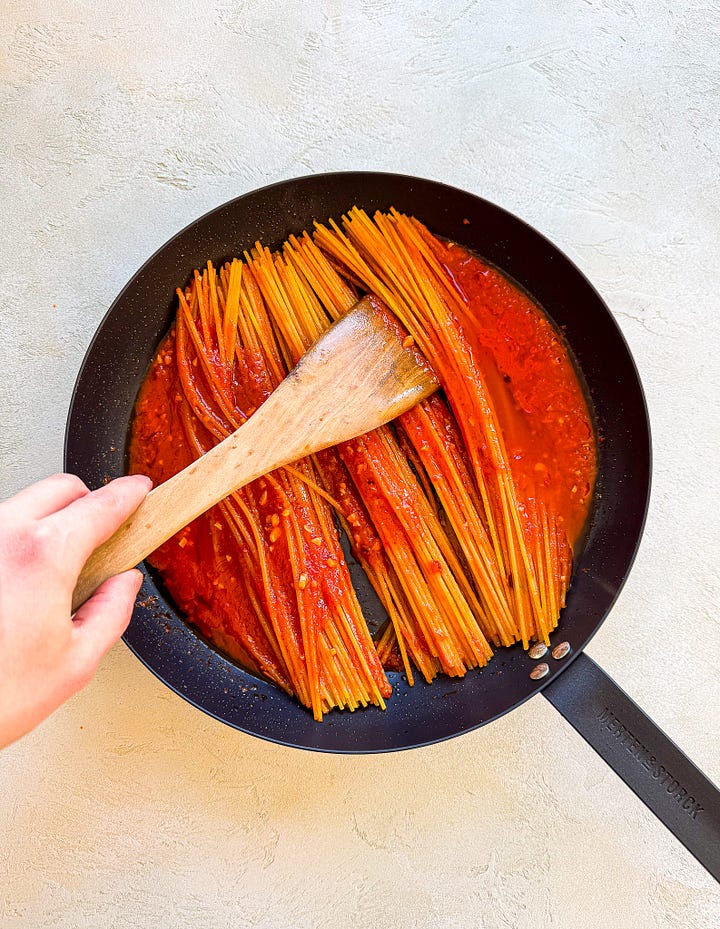

When most of the broth is absorbed and the pasta is sizzling again, carefully use the spatula to lift some of the pasta and check to see if the bottom is starting to caramelize. If not, let it sizzle a bit longer; if so, working in sections (and with two spatulas, if needed!), carefully flip the spaghetti.

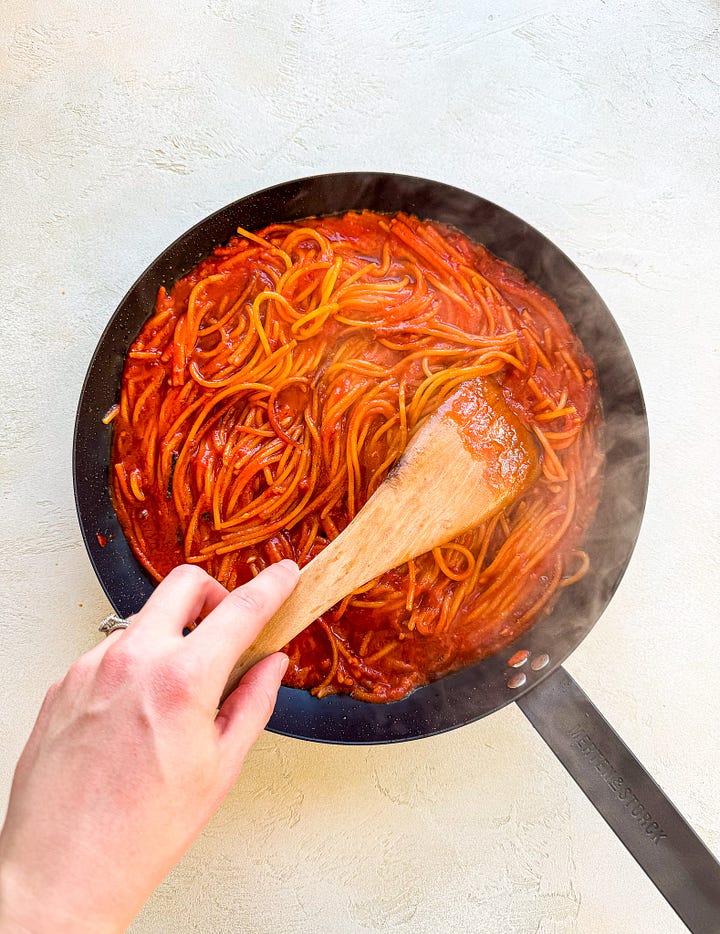
Add 1 cup (240 ml) broth and cook as before, moving the pasta around with the spatula and shaking the pan occasionally, until the liquid is absorbed and the sauce is crackling. Repeat with another 1 cup (240 ml) broth, then flip the pasta again.

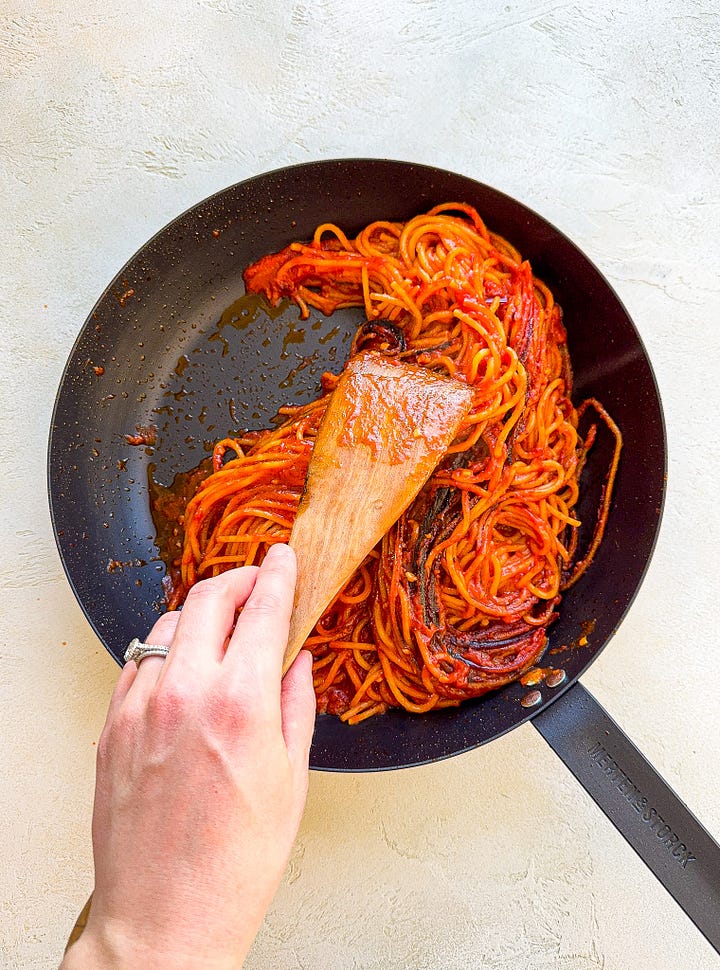
At this point, taste the pasta if you haven’t already—it should be cooked through but still al dente (some strands will be more tender than others and that’s fine!). If it’s still too firm, add some of the remaining broth, a little at a time, until cooked to your liking. Adjust seasoning to taste.
Finally, cook the spaghetti, undisturbed, until the bottom is deeply caramelized and charred in some spots, about 2 minutes more. Remove from the heat.
Using tongs, divide the pasta among bowls and serve, finished with another drizzle of olive oil. It’s also common to serve this dish with stracciatella on top, which I would totally support!





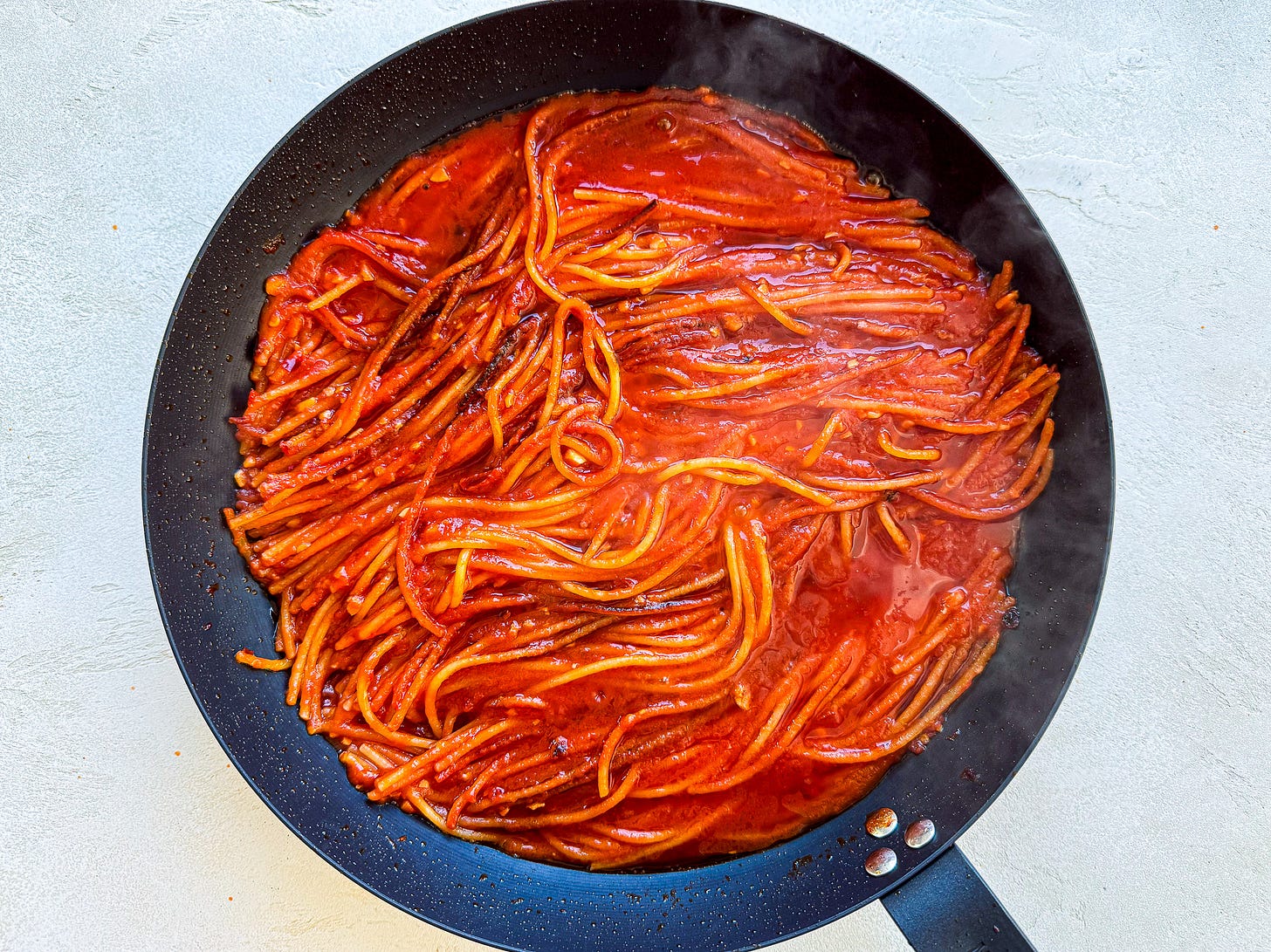

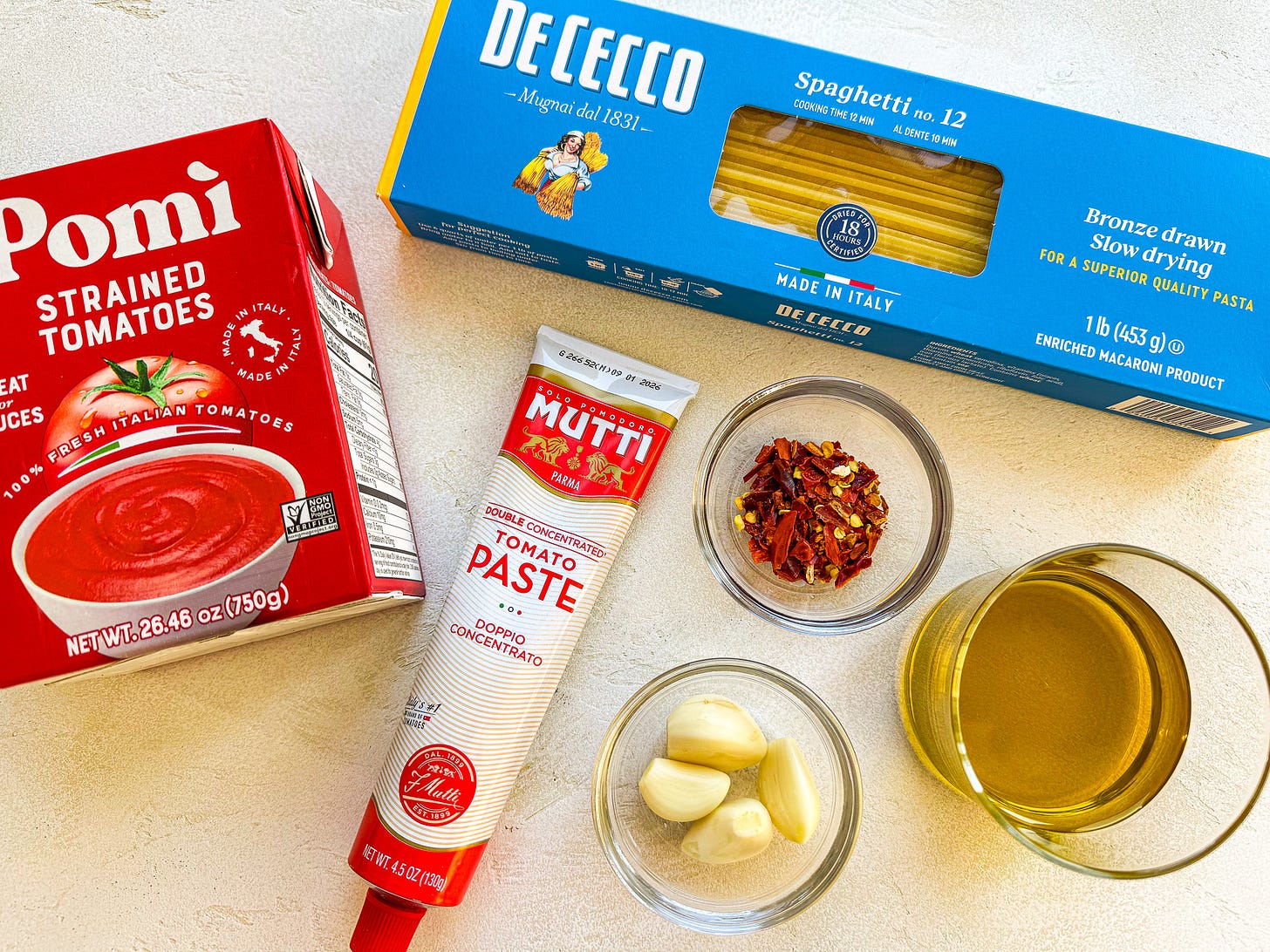


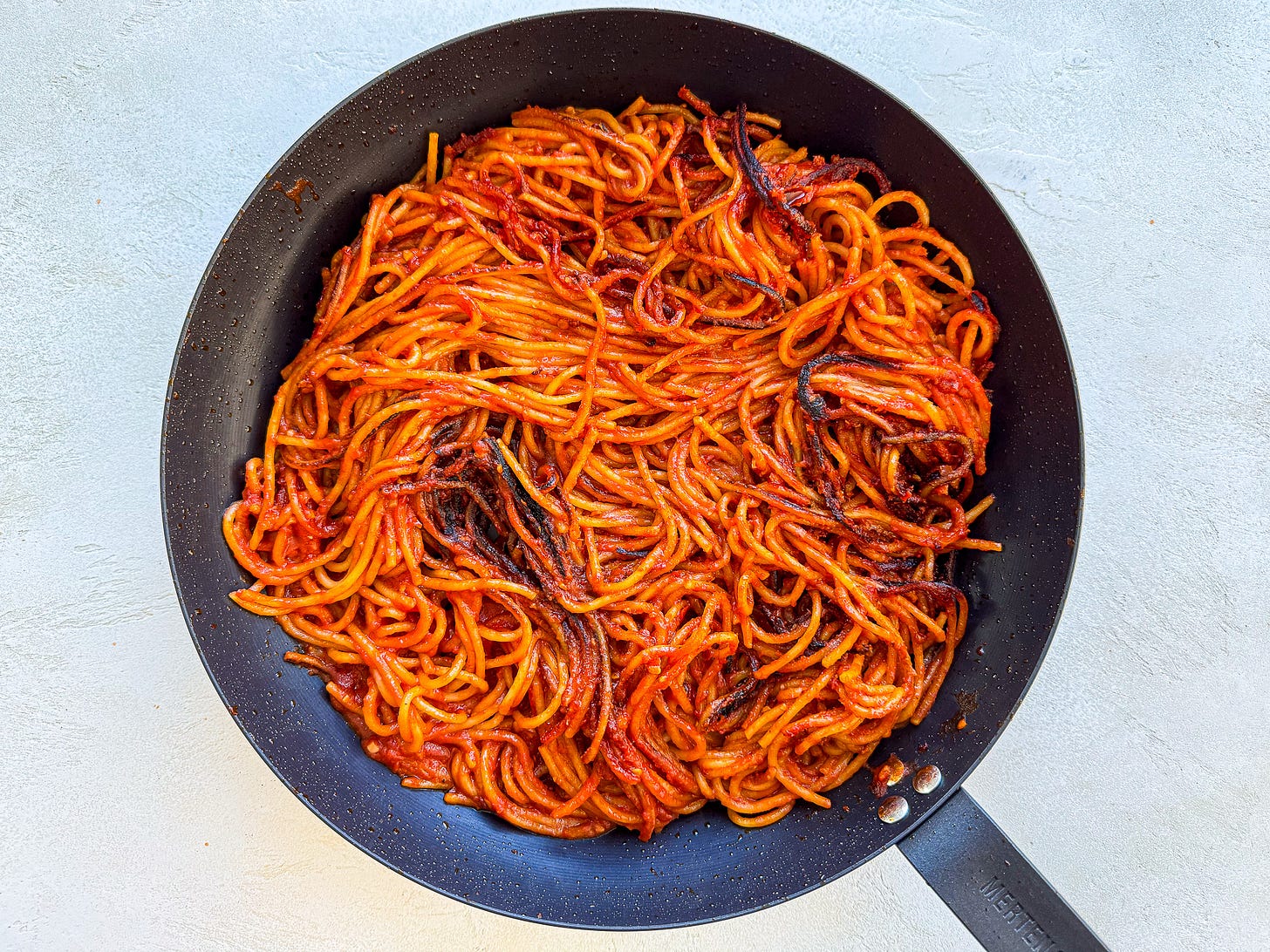
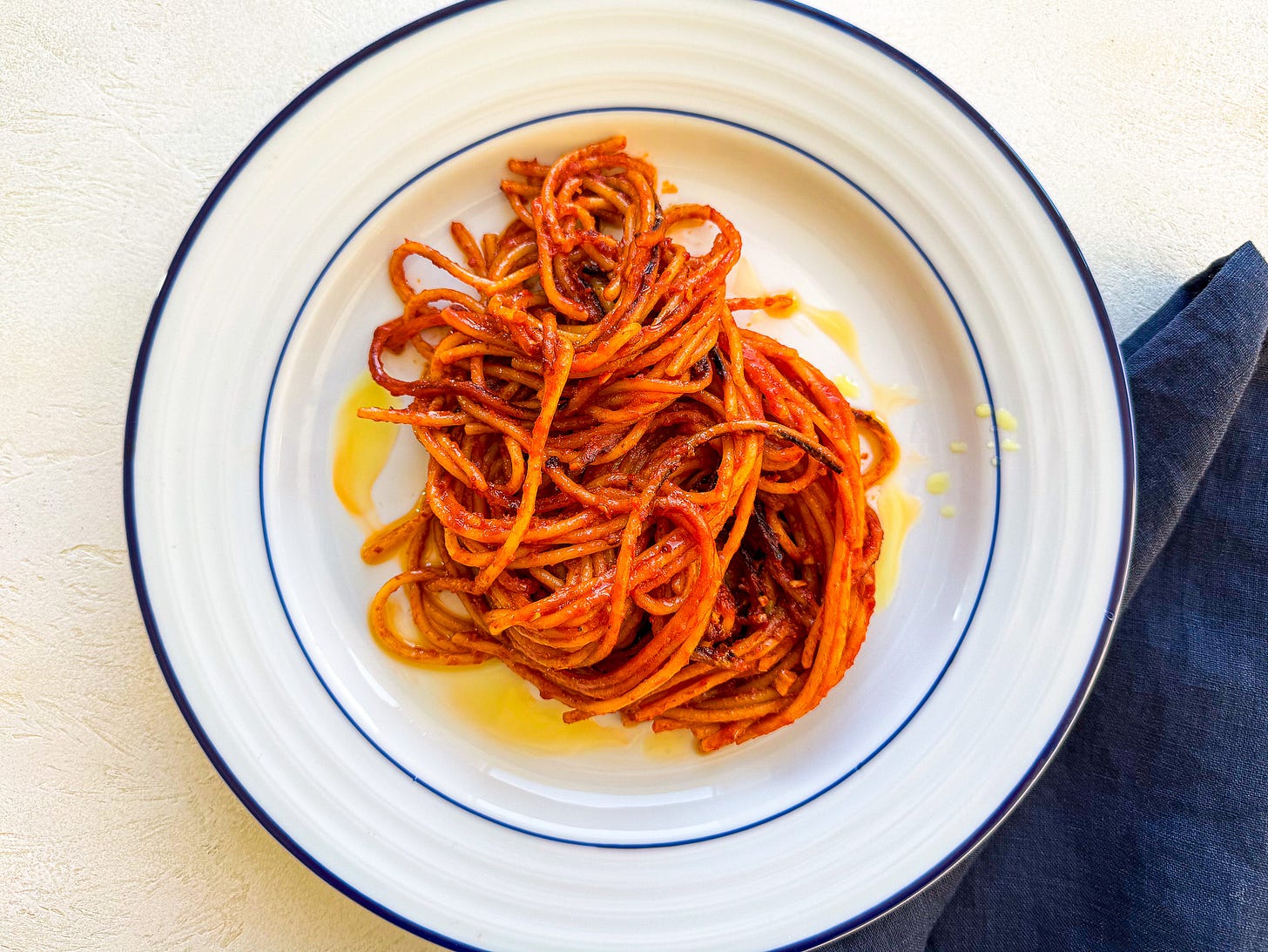
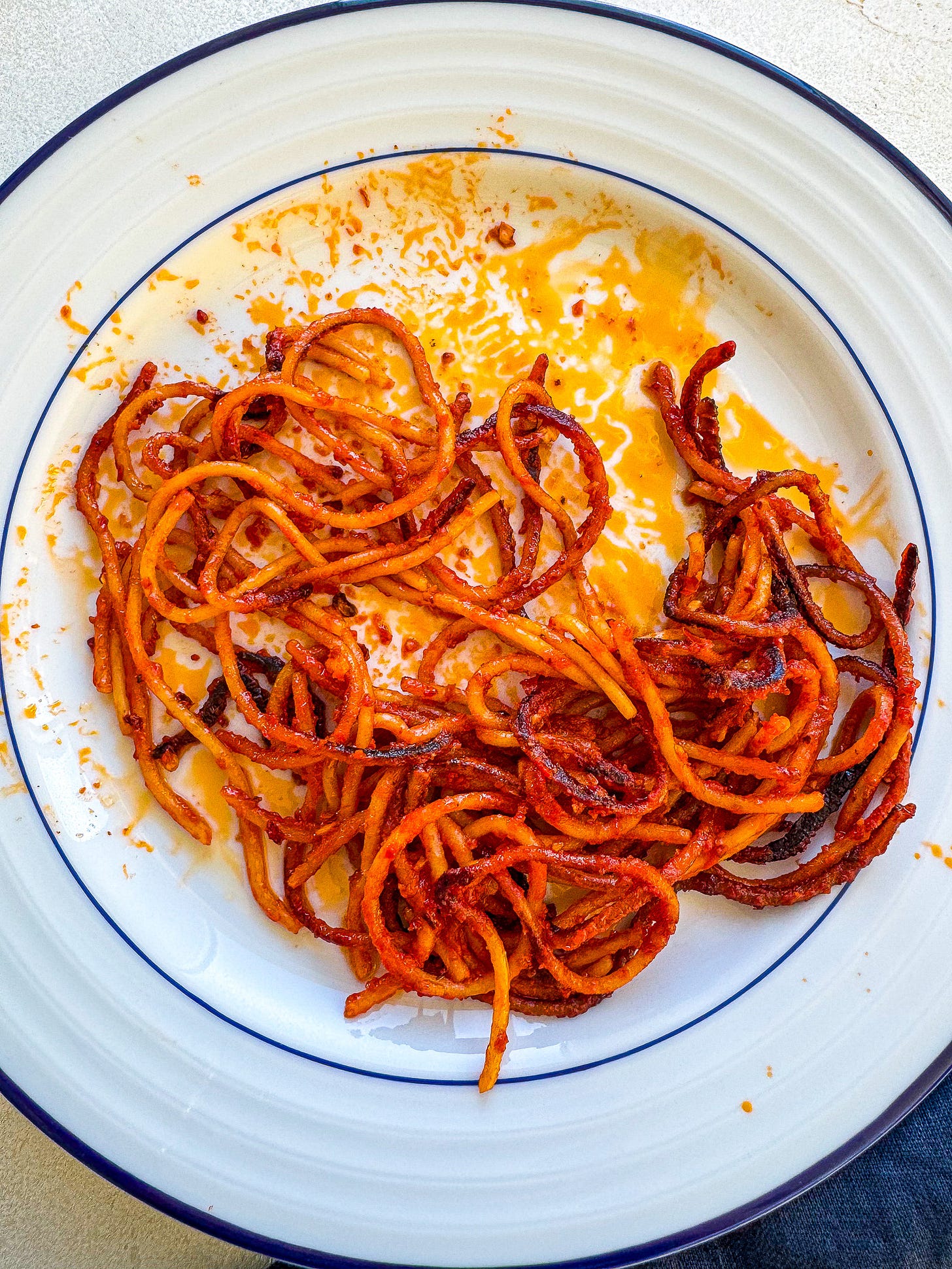
Wow, wow, wow! You covered all the aspects and techniques that lead to a successful spaghetti all’assassina, including pan choice. The only thing I’d add is, either don’t wear a brand new white shirt when making this fantastic dish, or roll with the bloody drama-splatter! Ask me how I know… ;-)
Evviva la bella Puglia!